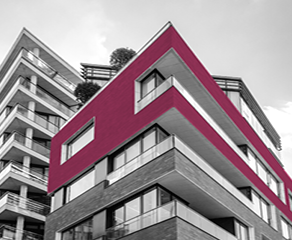Insight and events
back to Insights
Five things to know about converting a property into an HMO
Adrian Moloney | 01.06.2020
Houses in multiple occupations (HMOs) have become increasingly popular for both landlords and tenants over the past decade. They can be a good option for landlords offering the potential for higher yields and higher monthly profits through letting properties by the room.
The recent reductions to stamp duty also benefit buy to let landlords, meaning HMOs could become more enticing as a potential opportunity1. It’s therefore worth being prepared for a possible increase in HMO Mortgage related enquiries.
But are your clients aware of their responsibilities?
What your clients should know
You may have a client that’s considering purchasing an HMO or converting an existing property. With experience in dealing with these sorts of properties, we wanted to highlight some topics that may be of use in conversations with your landlord clients.
Regulation
If a property houses five or more people forming two or more households, a licence is needed. Licences are usually valid for five years but, bear in mind that there can sometimes be a wait for the licence to be granted – some councils could take many months to process applications.
Extra work may be required so that the property is compliant. In particular, the regulation stipulates that the minimum usable floor space is no less than 6.51 square metres for single occupancy and 10.22 square metres for double occupancy.
This could involve the landlord having to move or construct walls in order to alter room size, which in some cases will involve planning permission.
Note: It’s always worth checking the Local Authority standards for room size regulations as they can change between areas.
Health and safety
Landlords are subject to more regulation than if the property was let as a single unit. Extra requirements include fire alarms, fire doors and emergency lighting, and the council may add other conditions to your licence, for example improving the standard of your facilities such as additional bathrooms and cooking facilities.
Landlords are also required to test the fire alarms regularly, ensure communal areas are kept clean and rubbish is kept under control. More information about HMO health and safety can be found here.
Vetting and letting
It’s worth remembering the high levels of turnover involved. An HMO property with seven rooms actually involves taking on seven separate tenants, each requiring their own contract.
The level of effort required for an HMO property is invariably more than a single-let dwelling. But, the risk to the bottom line is lessened by the fact that revenue is spread over multiple occupants.
Wear and tear
Again, with a high turnover of tenants, maintenance costs will go up and need to be minimised where possible.
High durability carpets, lifetime warranties on door handles, the right bathroom finishes, kitchen specification and even the choice of light bulbs are all things to consider.
Are your clients HMO ready?
Whether your clients are first-time HMO landlords, or are looking to diversify their portfolios, please speak to your business development manager or call our broker liaison team and see if we can help on your next case, alternatively view our range of buy to let products.
1 https://www.gov.uk/guidance/stamp-duty-land-tax-temporary-reduced-rates

